 An Open Letter to University Presidents
An Open Letter to University Presidents
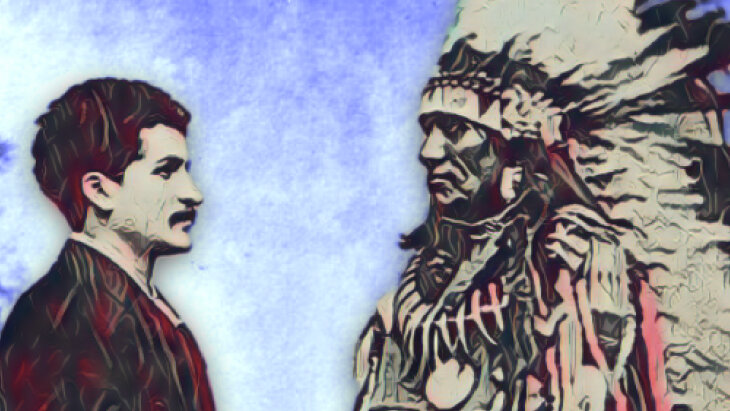

7 min read
Julius Meyer spoke six Native American languages in 19th century Nebraska.
In 1864, Julius Meyer was 13 years old when he left his hometown of Bromberg, in Prussia, and boarded a ship headed for the United States which was embroiled in a bitter civil war. Julius planned to join his three older brothers, Max, Adolph and Moritz who were living in the thriving Jewish community of New York City where they worked as merchants.
With the end of the Civil War, the Meyer brothers saw bright new opportunities along America’s burgeoning Western Frontier. Max Meyer was the first brother to move, settling in Omaha, in the Nebraska Territory, in 1866, where he set up a company manufacturing cigars.
Omaha was a happening place. Between 1860 and 1870 the population mushroomed from fewer than 2,000 residents to 16,000, along with 20 churches and 127 saloons.
Julius and the other Meyer brothers soon joined Max. They renamed the cigar business Max Meyer & Brothers Co. and expanded into selling jewelry and musical instruments. Even in his new home, Julius stood out for his Jewish pride. Omaha had very few Jews at the time, but Julius was scrupulous about keeping kosher. Since it was nearly impossible to find kosher meat, it seems he kept a vegetarian diet.
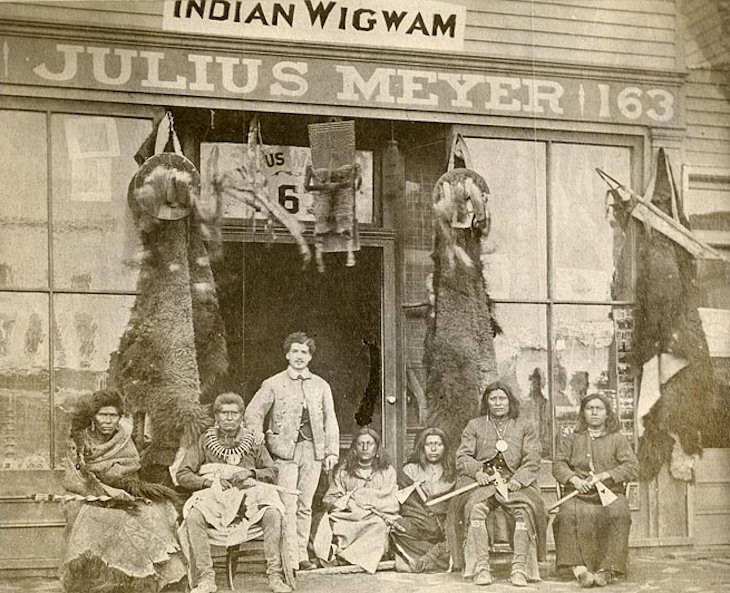 Julius Meyer in front of his store at 163 Farnam Street, Omaha, Nebraska, about 1875. The Julius Meyer Collection
Julius Meyer in front of his store at 163 Farnam Street, Omaha, Nebraska, about 1875. The Julius Meyer Collection
As the family business expanded, Julius carved out a new commercial niche for himself, venturing far into Native American lands and trading Max’s cigars for Indian-made items such as jewelry, clothes and tools. Julius opened a store called “Indian Wigwam” where he sold what he described as “Indian, Chinese and Japanese Curiosities.” It was a popular store and Julius spent a great deal of time trading with various Native American far from home. His travels nearly led to Julius’ death.
Traveling in an unfamiliar area, Julius found himself surrounded by hostile members of a Native American tribe. They seized Julius’ bags and were about to scalp him when Chief Standing Bear, the leader of the Ponca nation, appeared on the scene. Ponca fighters battled the group, saving Julius, and chased off the hostile tribe. Julius was injured in the fight and carried a scar on his forehead for the rest of his life. He also became firm friends with Chief Standing Bear.
Julius’ niece, Lena Rehfeld, later recalled, “Uncle Julius never forgot him for that, and Standing Bear never wanted for anything while he lived that Uncle Julius could provide for him.”
Julius became very close to the Ponca tribe, as well as with the Oglala Sioux, Oglala Lakota, Pawnee, and other groups. In time, he mastered at least six different Native American languages, including Omaha, Ponca, Brule Sioux, Winnebago, Pawnee and Ogallala. Julius even became an honorary member of the Pawnee people, and was given the Pawnee name Box-ka-re-sha Hashta-ka, meaning “Curly-haired white man who speaks with one tongue.” He was incredibly proud of this hard-earned name, and used it widely.
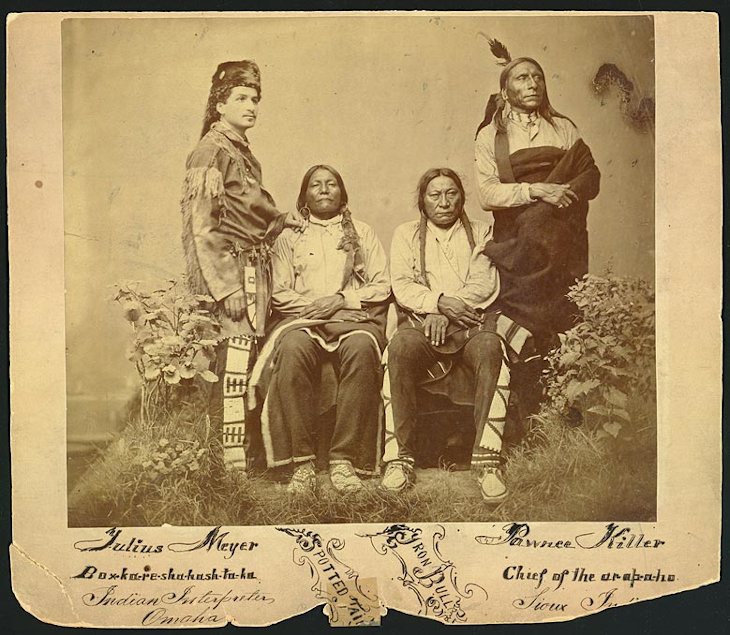 Julius Meyer, Spotted Tail, Iron Bull and Pawnee Killer, about 1875, The Julius Meyer Collection. Although identified by the inscription on the photograph, there are questions about the identities of the Native Americans.
Julius Meyer, Spotted Tail, Iron Bull and Pawnee Killer, about 1875, The Julius Meyer Collection. Although identified by the inscription on the photograph, there are questions about the identities of the Native Americans.
The reference to Julius having only “one tongue” reflected his honesty and trustworthiness. At a time when few European traders dealt honestly with Native Americans, Julius was scrupulously fair and reliable. Julius’ friend Col. T. W. McCullough, editor of the Omaha Bee News, later recalled that “The Indians trusted Julius Meyer implicitly. He always talked to them with a ‘straight tongue.’ He always told them the truth.”
In his time living amongst Native Americans, Julius found ways to keep kosher. His hosts knew that Julius would only eat hard boiled eggs, never the meat. It became customary for his Native American hosts to prepare a batch of hard-boiled eggs whenever Julius was invited to stay.
Photography was a popular new art in the late 1800s, and Julius and some of his Native American friends posed for several iconic photographs. Julius realized that these photos were great publicity for his business and lent his store an aura of grandeur. He began to commission even more photographs with distinguished Native American leaders. In one of Julius’ most famous photographs, four Native American chiefs pose with him: Red Cloud, Sitting Bull, Swift Bear and Spotted Tail. (Julius was rumored to have paid each of the chiefs the enormous sum of $200 plus two ponies for the privilege of appearing in the photo with them.)
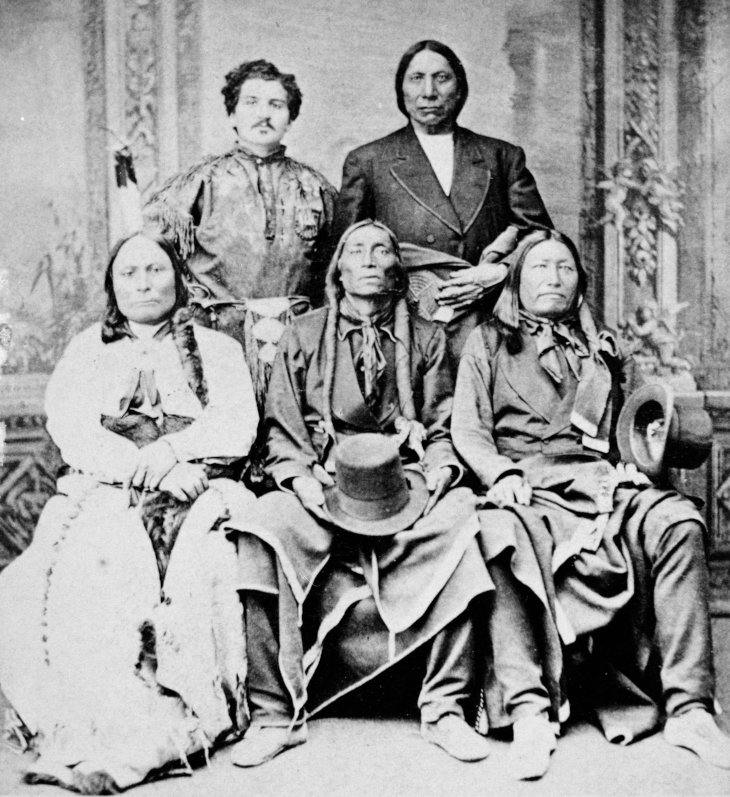 Group portrait of Sitting Bull, Swift Bear, Spotted Tail, Julius Meyer, and Red Cloud, 1875
Group portrait of Sitting Bull, Swift Bear, Spotted Tail, Julius Meyer, and Red Cloud, 1875
Julius’ love of Native American culture extended far beyond business. He worked with Gen. George Crook, who served in the United States’ Indian Wars and emerged as a gadfly calling for the US Government to keep the promises it made to conquered Native American tribes. Gen. Crook became a leading voice in favor of Native American rights and he was aided by Julius Meyer’s work as a translator and conduit to tribal chiefs.
In 1889, the government of France hired Julius to bring Native Americans to France for the Paris Exposition that year. Julius traveled on the long ocean journey with several of his Native American friends, including Chief Standing Bear. They stayed in Paris for nearly a year, explaining Native American culture to visitors from all over the world.
Back at home in Omaha, Julius lived a vividly theatrical life, entertaining widely. When illustrious visitors came to Omaha - including many artists, opera singers and intellectuals of the day - they found that Julius was Omaha’s most distinguished host, running salons out of his home and hosting lavish parties. He loved to play the flute, and helped found the 117-piece symphony called the Omaha Musicians Union, the precursor to the Omaha Symphony, often conducting their concerts.
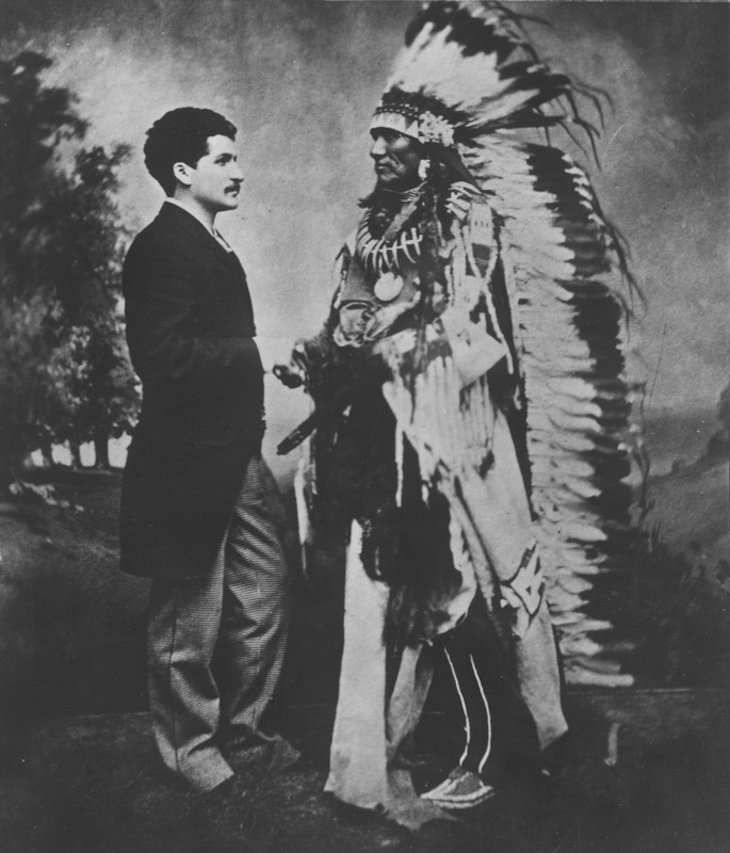 Julius Meyer and Standing Bear
Julius Meyer and Standing Bear
Though he was one of Omaha’s most prominent citizens, as a Jew Julius was always somewhat of an outsider. He helped start the Standard Club, a nondenominational club where Jews could socialize. Later on, its name was changed to the Metropolitan Club and became a Jewish social club. Julius and his brother Max helped establish a Jewish burial society and Jewish cemetery in Omaha. They were two of the founding members of Nebraska’s first synagogue, Temple Israel in Omaha. With pogroms terrorizing Jewish communities across Russia’s Pale of Jewish Settlement, Julius also formed the Hebrew Benevolent Society to help Russian Jews.
The strange circumstances of Julius’s death remain a mystery to this day. One Spring morning in 1909, Julius left his comfortable apartment and strolled down to his brother Max’s store. The brothers chatted for a while, Julius lit a cigar, and told Max, “Well, I think I will walk up the street a while and get some fresh air.”
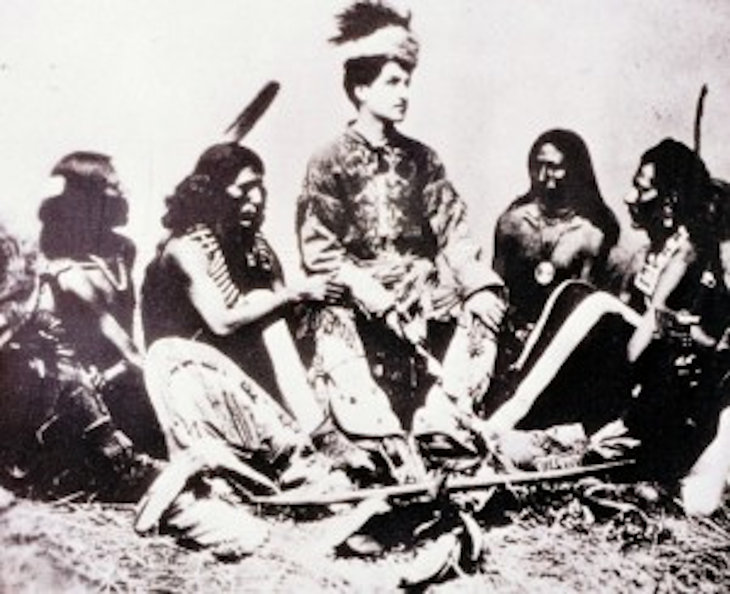 Julius Meyer, interpreter for Indians
Julius Meyer, interpreter for Indians
An hour and a half later, a passer-by found Julius’ body, shot to death in Hanscom Park, two miles away. A gun was placed in his left hand. The local authorities concluded that he had taken his own life, though some historians have pointed out that in photographs, it seems that Julius gripped items such as pipes in his right hand, and commonly wore his holster on his right side, not his left.
Julius Meyer had never married but he was widely mourned throughout Nebraska as a high-spirited entertainer, a patron of the arts, and a proud Jew who insisted on living a publicly Jewish life, even when circumstances made it exceedingly difficult to do so.

Thank you for this very interessing history of Julius Meyer.
Paul Oyen, interested in and respect of Indian Culture.
Former Horse Police man and member of the Royal Security Guard. Flandres in BELGIUM